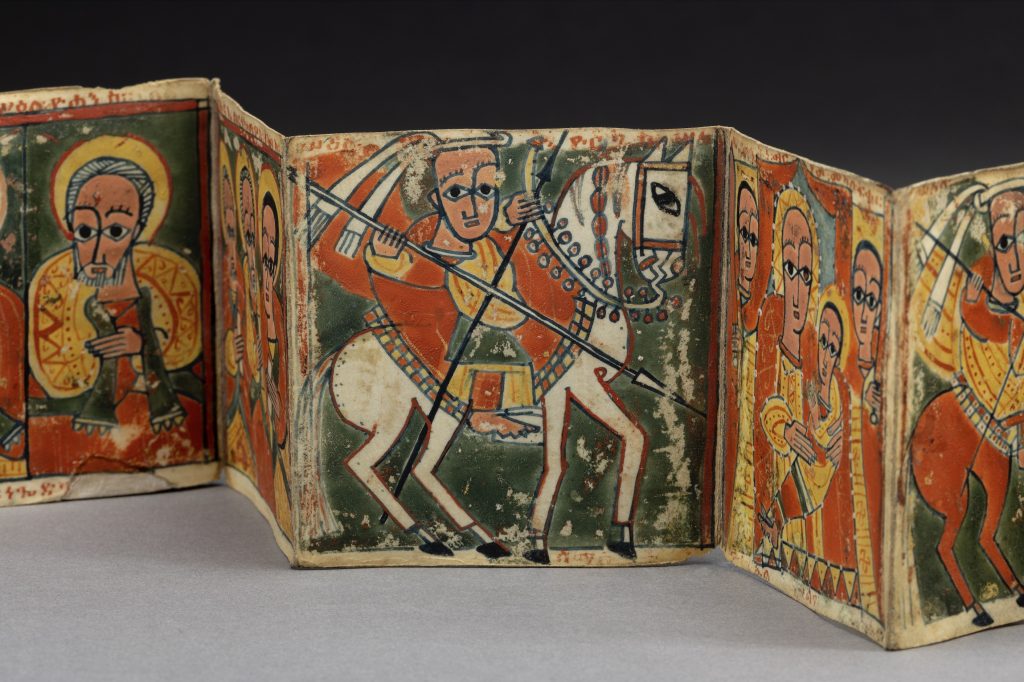by Bruce Sylvester
Located on the Horn of Africa, Ethiopia has been a crossroad for European, African, and Arab traders and travelers of Christian, Jewish, Islamic, and less-known regional faiths. Seventy-one ethnicities are within its borders.
Through July 7 up in Salem, the Peabody Essex Museum presents “Ethiopia: At the Crossroads” with about 200 items – religious texts, jewelry, icons, woven baskets, and more – going back to the 14th century. Contemporary works are sometimes placed beside ancient ones to create a sort of conversation between them.
Many items are religious: processional crosses, incense burners, colorfully illustrated texts in a variety of scripts – some on scrolls. Within Islam, calligraphy is held to be one of highest forms of art so you can imagine the beauty in some Qarans here. Texts from the Ethiopian Orthodox church are in Ethiopian script. We hear contemporary Ethiopian Orthodox religious music.
Among Africa’s nations, Ethiopia has spent very little time as a colony of any larger, more developed nation. There’s a photograph of captured soldiers from one attempt as well as a posed photograph of their last emperor, Haile Selassie, a hero to Rastafarians. Next to it hangs the elegant black velvet cloak he’s wearing in the portrait.
For interactivity, scratch-and-sniff cards offer the scents of native spices. Near the exhibit’s end, you can step into an interactive video.
“Ethiopia: At the Crossroads” is at the Peabody Essex Museum through July 7. It’s a thirty-minute commuter rail ride from North Station with a ten-minute walk from Salem station to the museum.

